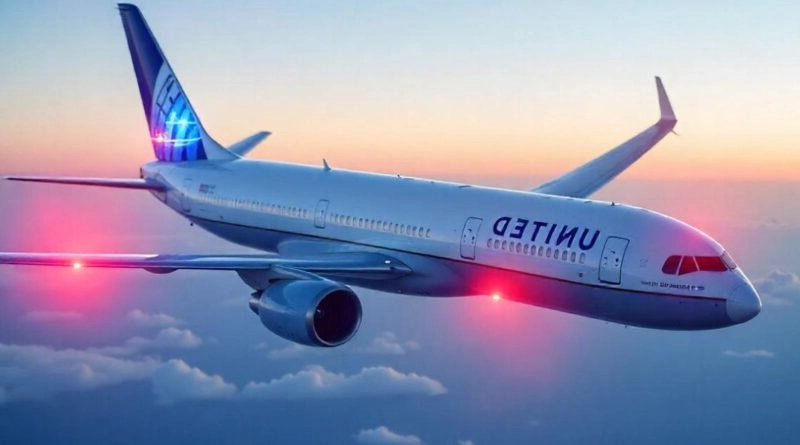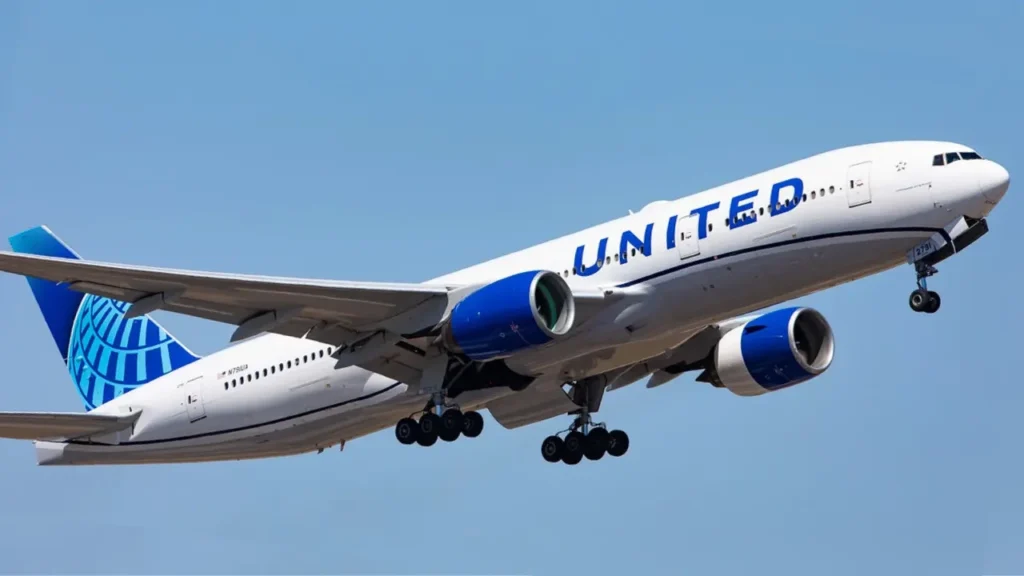On May 27, 2025, United Airlines Flight UA770, a Boeing 787-9 Dreamliner en route from Barcelona El Prat Airport (BCN) to Chicago O’Hare International Airport (ORD), became the focus of global attention when it declared a mid-air emergency and diverted to London Heathrow Airport (LHR). The incident, marked by the activation of the universal emergency transponder code “Squawk 7700,” underscored the complexities of modern aviation and the robust safety protocols that ensure passenger and crew safety.
This article provides a comprehensive examination of the United Airlines Flight UA770 emergency diversion, exploring its causes, execution, passenger experiences, and broader implications for the aviation industry.
Background of Flight UA770
United Airlines Flight UA770 is a regularly scheduled transatlantic service connecting Barcelona, Spain, to Chicago, USA. Operated by a Boeing 787-9 Dreamliner (registration N26902), the flight typically carries a mix of business travelers, tourists, and families. On the day of the incident, the aircraft departed Barcelona at approximately 2:30 PM CEST, carrying over 200 passengers and crew members. The Boeing 787-9 is renowned for its advanced technology, fuel efficiency, and passenger comfort, making it a staple for long-haul routes like BCN-ORD. However, even the most sophisticated aircraft can encounter unforeseen issues, as evidenced by this event.

The Incident: What Happened?
The emergency unfolded roughly 90 minutes into the flight, as the aircraft cruised at 37,000 feet over European airspace. According to multiple sources, the timeline of the incident is as follows:
- 10:05 AM (CEST): Flight UA770 departs Barcelona El Prat Airport, bound for Chicago O’Hare.
- 11:45 AM: The aircraft reaches its cruising altitude of 37,000 feet, with operations reported as normal.
- 12:10 PM: The flight crew detects a technical irregularity, later identified as potential cabin pressurization issues, and alerts air traffic control (ATC).
- 12:15 PM: The pilots activate Squawk 7700, signaling a general emergency to all ATC facilities in range.
- 12:30 PM: ATC clears the aircraft for an expedited route to London Heathrow Airport, one of Europe’s best-equipped airports for handling emergencies.
- 4:55 PM (BST): The aircraft lands safely on Heathrow’s Runway 27R and taxis to Gate B44.
Cause of the Diversion
While United Airlines has not officially confirmed the precise cause of the diversion, early reports and passenger accounts point to cabin pressurization issues as the primary trigger. Passengers reported unusual noises, sudden cabin pressure changes, and, in some cases, the deployment of oxygen masks, indicating a potential failure in the aircraft’s environmental control systems. Cabin pressurization problems, though rare, are serious, as they can pose health risks to passengers and crew if not addressed promptly. The Boeing 787-9’s Airplane Health Management system, which monitors over 280,000 parameters, likely detected the anomaly and alerted the crew, prompting immediate action.
Other potential causes, such as mechanical failures, medical emergencies, or environmental factors, were considered but not confirmed. For instance, no reports verified a medical emergency, and weather conditions were clear along the flight path. The decision to divert was likely a precautionary measure, reflecting the airline’s prioritization of safety over continuing the journey.
Execution of the Emergency Diversion
1. Crew Response and Training
The professionalism of the UA770 flight crew was a critical factor in the successful outcome of the diversion. Trained extensively for emergency scenarios, the pilots followed standard operating procedures, communicating with ATC to secure priority landing clearance and executing a controlled descent to London Heathrow. Cabin crew members maintained composure, providing regular updates via the intercom and preparing passengers for a potential emergency landing. Passenger accounts consistently praised the crew’s calm demeanor, which helped prevent panic and ensured an orderly cabin environment.
2. Air Traffic Control and Ground Support
The diversion showcased the seamless coordination between international air traffic control systems and ground support teams. EUROCONTROL’s advanced traffic management systems facilitated a rapid transition of the aircraft through Spanish, French, and British airspace within 15 minutes. ATC cleared nearby traffic, provided expedited routing, and ensured emergency services were on standby at Heathrow. Upon landing, ground crews, medical personnel, and customs officials were prepared to assist, demonstrating the maturity of aviation’s emergency response infrastructure.
3. Technological Contributions
The Boeing 787-9 Dreamliner played a significant role in the safe execution of the diversion. Equipped with three independent flight control computers and an Automatic Dependent Surveillance-Broadcast (ADS-B) system, the aircraft provided real-time data to both the crew and ground control. The moment Squawk 7700 was activated, enhanced surveillance data, including GPS coordinates and system status, was transmitted, enabling precise tracking and coordination. This incident highlighted how modern aircraft function as “flying data centers,” leveraging technology to mitigate risks.
Passenger Experiences
Passenger accounts provide a human perspective on the UA770 emergency diversion. Initially, the cabin atmosphere was calm, with passengers engaged in typical in-flight activities. However, as the crew announced the diversion and oxygen masks deployed, anxiety and uncertainty spread. One passenger recalled, “The crew was calm. That helped a lot. But we didn’t know what was going on,” while another noted, “The descent felt sharp but not dangerous. The pilot was clear on the mic.” Despite the tension, the crew’s professionalism and frequent updates helped maintain order.
Upon landing at Heathrow, passengers disembarked safely and were accommodated with rebooking, meal vouchers, hotel stays, and, in some cases, travel credits. United Airlines’ swift response minimized disruption, with most passengers rebooked on alternate flights within hours. Social media platforms like X and TikTok buzzed with passenger stories, many of which expressed gratitude for the safe outcome and the crew’s handling of the situation.
United Airlines’ Response
United Airlines issued a statement confirming the diversion, citing a “potential mechanical issue” as the reason and emphasizing that the action was taken “out of an abundance of caution.” The airline underscored its commitment to safety, stating, “The safety of our passengers and crew is always our top priority.” The aircraft underwent a thorough inspection to identify the cause of the issue, and United provided comprehensive support to affected passengers, including rebooking and compensation.
The airline’s transparency and proactive measures were well-received, aligning with industry standards for handling such incidents. The Federal Aviation Administration (FAA) and other aviation authorities are likely conducting a formal review to ensure compliance with safety protocols and to identify any lessons for future operations.
Broader Implications for Aviation Safety
Safety Protocols and Redundancies
The UA770 diversion exemplifies the aviation industry’s multi-layered safety systems. Emergency diversions, while rare (occurring in approximately 1 in 600 flights), are a critical tool for mitigating risks. The incident demonstrated the effectiveness of:
- Pilot Training: Rigorous training ensures crews can handle emergencies calmly and efficiently.
- Aircraft Technology: Advanced systems like the Dreamliner’s health monitoring capabilities detect issues early, enabling proactive responses.
- Global Coordination: Seamless communication between ATC, ground crews, and airlines ensures rapid and effective emergency management.
Lessons Learned
Each emergency diversion contributes valuable data to aviation safety. The UA770 incident will likely inform future protocols, particularly regarding cabin pressurization systems. Airlines are increasingly adopting AI-driven predictive maintenance systems, which analyze sensor data to identify potential issues before they escalate. This event may accelerate the integration of such technologies, enhancing the reliability of long-haul flights.
Passenger Confidence
While diversions can be unsettling, they reinforce the industry’s commitment to safety. The UA770 incident, handled without injuries or significant disruption, serves as a testament to the robustness of modern aviation systems. Transparent communication and prompt passenger support, as demonstrated by United, are key to maintaining traveler confidence.
Comparison with Other Incidents
To contextualize the UA770 diversion, it’s useful to compare it with other notable United Airlines emergencies:
- United Flight 328 (2021): An engine failure over Denver led to a diversion with debris falling on residential areas. The flight landed safely, with no injuries.
- United Flight 1175 (2018): Severe vibrations prompted a diversion to Honolulu, also executed without casualties.
Unlike these incidents, UA770 involved a less dramatic issue (likely pressurization) but still required swift action. The successful outcome reinforces the industry’s ability to manage diverse emergency scenarios.
The UA770 diversion highlights ongoing advancements in aviation safety. Emerging technologies, such as real-time video consultations with medical professionals and AI-driven risk prediction, promise to further enhance emergency response capabilities. Additionally, the incident underscores the importance of continuous crew training and international cooperation, ensuring that even rare events are handled with precision.
Conclusion
The United Airlines Flight UA770 emergency diversion on May 27, 2025, was a striking reminder of the unpredictability of air travel and the strength of modern aviation safety systems. From the crew’s professionalism to the aircraft’s advanced technology and the seamless coordination of global air traffic control, every element worked in harmony to ensure a safe outcome. While the exact cause remains under investigation, the incident serves as a case study in crisis management, reinforcing the industry’s commitment to passenger safety. As aviation continues to evolve, events like UA770 will drive improvements, ensuring that air travel remains one of the safest modes of transportation.
For more compelling stories about aviation events, emergency responses, and the unsung heroes behind the scenes, keep exploring SayWhatMagazine.

